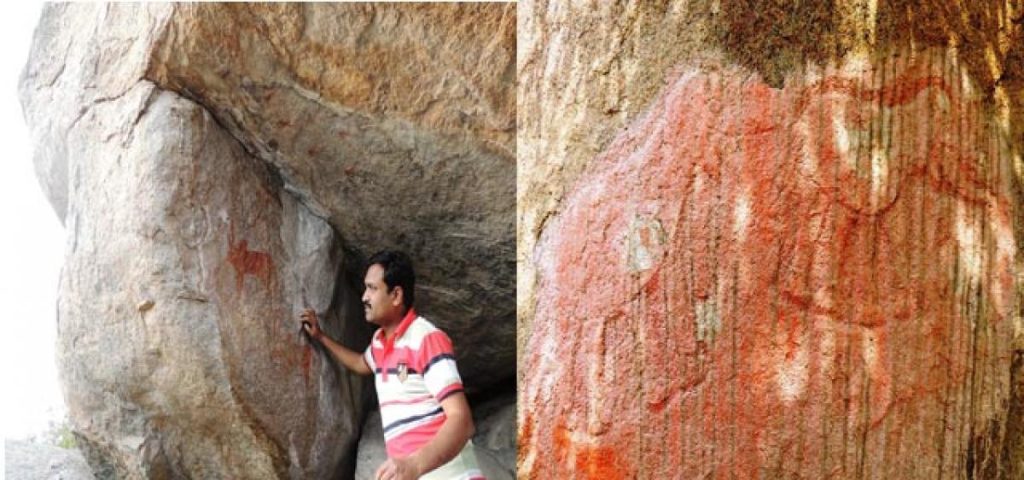In a remarkable find, new evidence of Upper Palaeolithic tools and rock art has been discovered in Rachakonda, shedding light on the prehistoric inhabitants of the region. Historian Dyavanapalli Satyanarayana, who has been studying the area since 2014, recently made the significant discovery during a visit on July 8 and 9. The findings include prehistoric tools and rock paintings that provide valuable insights into the ancient culture and practices of the region.
One of the remarkable discoveries was a heart-shaped boulder located on the north bank of Bayati Cheruvu (Anapota Samudram) within the West Gate of Rachakonda Fort. According to Satyanarayana, this boulder, along with an adjacent boulder, served as shelters for prehistoric people. He explored the remains in the area and found a hand tool made of black basalt stone, indicating its use as a hand axe and chopper by nomadic people of the Upper Palaeolithic Age. The tool’s estimated age corresponds to the period between 50,000 BCE and 12,500 BCE, during which similar tool users existed in the Telugu states.
Further evidence supporting continuous human habitation in the area was found beneath the heart-shaped boulder in the form of four cupules. Satyanarayana explained that these cupules were created by Neolithic people while drilling the base stone to make tools, providing insights into their tool-making techniques.
Another significant discovery was made at Bhogini Mandapam, where a painting was found on the wall of a nearby cave. The painting depicts three distinct images—a figure of an arrow on the left, a monitor lizard on the right, and maize with corn in the middle. Satyanarayana explained that these depictions hold cultural and religious significance. The arrow figure represents the worship of arrowheads by tribes such as Gonds, Koyas, and Naikpods, who also celebrate new crop festivals. The image of maize with corn represents one of the crops associated with these festivals. Additionally, the painting reflects the tradition of performing the “udumu aata,” a play involving a monitor lizard, during festivals.
Satyanarayana also discovered line drawings on another boulder in the area. These drawings include figures of a Shivalinga (a representation of Lord Shiva), a serpent, the Raja-Danda (Royal Insignia), and a circle symbolising the Sun. At the bottom of the drawings, there is a depiction of a king. The nearby stone inscription reveals that Rachakonda Fort and the adjacent tank were constructed by King Anapota Nayaka. It is likely that the line drawings were created under the orders of King Anapota Nayaka as a form of worship to Lord Shiva before the excavation of the tank.
The recent discoveries in Rachakonda provide valuable insights into the region’s prehistoric past, offering glimpses of the tools used by ancient nomadic people and the cultural practices and beliefs of the Neolithic communities. These findings contribute to a deeper understanding of the rich history and heritage of the area.
As researchers continue to study and document these remarkable findings, they are set to enhance our knowledge of the ancient civilisations that once thrived in Rachakonda, further emphasising the importance of preserving and protecting the region’s cultural and archaeological treasures for future generations.
Feature Image courtesy: thehansndia

Contributor





